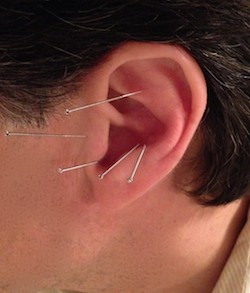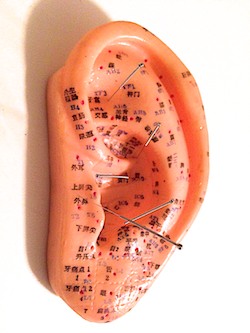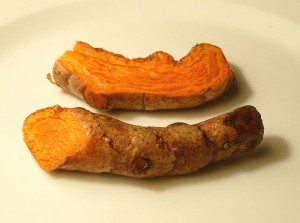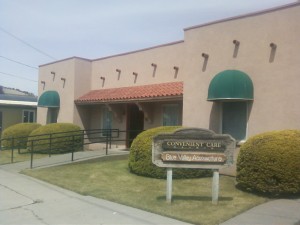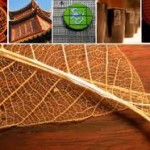- Denise Lane; EAMP, LAc.1010 S. 3rd St.
(Dayton General Hospital)
Dayton, WA 99328509-382-3202
Physical Therapy Dept. Clinic Hours:
Tuesday-Thursday11am - 5pmSaturday12pm - 5pm
- Sign up to receive news and updates and get my free report:“The Top 10 Reasons to Try Acupuncture”

Follow Us!
-
- Testimonials
I had a great first visit today. Excellent service, I feel less stressed, and pain lightened up. Looking forward to my next visit.
J.V., Dayton, WA.
Two years ago I took a tumble off a horse and landed on my back.
For the first week after the accident, I could not walk upright and my entire back was in pain due to injury and sore muscles. Spasms and shooting pain would hit me any time of the day or night. Ice, heat and pain relievers were not improving my situation at all.
I finally sought treatment from Denise. For a week she did acupuncture,
... Read more »Some could call me a bit of a skeptic and acupuncture was at the top of my list – enter Denise!
I have become so dis-enchanted with traditional methods to my issues and the time I’ve spent with Denise has rocked my world!!! Acupuncture is helping me cope with my stress, the pain in my knee is subsiding and my lifelong abdominal issues are getting some much needed attention.
One appointment with Denise and I feel like
... Read more »I’ve had acupuncture from a number of therapists over the years and Denise ranks as one of the best. She has treated me for headaches, neck pain and constipation. All my symptoms have shown great improvement! I can’t recommend her highly enough.
G.R.; Pomeroy, WA.
I’ve known Denise for a few years now and have received acupuncture treatment from her for lower back pain and stress. It gave me instant relief. Denise is great at what she does and has been a wonderful resource for me to have.
G.W.H., Portland, Or.
I went to get acupuncture from Denise Lane for two problems, gout and stress. I am doing well enough that I have not had to return for follow up treatments for three months. She is very caring and straight forward.
–G., Waitsburg, Wa.
-
Latest Articles:
- • The Best Ways to Protect Your Skin from the Sun This Summer •
- • Savoring Summer with Recipes Using the Best Summer Ingredients •
- • Top 5 Best Staycation Ideas for Summer •
Uncategorized
Healthy Foods for Fall

The season of fall brings cooler weather and shorter days. As with any season, the world adjusts accordingly. Plants begin to go dormant, animals begin scrounging for food to store to get them through the upcoming winter months and humans start winterizing everything.
As fall descends on the land, it reminds us we need to start cutting back on the numerous cooling foods that are consumed during the summer months. Things like raw foods, salads, juices and fruits should be decreased because they can create too much cold in the body, according to traditional Chinese medicine. continue reading
Five Reasons to Get Acupuncture for Low Back Pain

Statistics show eight out of 10 people will experience low back pain at some point during their life. Seeking medical treatment for back pain is very common. Typically back pain is fleeting and can be easily resolved with rest, heat and an occasional anti-inflammatory like ibuprofen. However, once the damage is done, the recurrence of back pain can be as high as 50 percent. Part of this is because as we age, things like muscles and tendons become less flexible and pliable. It is also very well known in the United States, people are too sedentary and this leads to excess weight gain that can create added pressure on the body, especially the low back. continue reading
Auricular Acupuncture Helps With Weight Loss
Auricular Acupuncture Weight Loss Found Effective
Blue Valley Acupuncture Clinic- Located in Dayton, Wa. Serving greater Walla Walla area, Waitsburg, Starbuck & Pomeroy.
Article provided by HealthCMI
Auricular acupuncture successfully treats obesity. A new study concludes that a special 5 point combination of auricular acupuncture points is effective for weight loss in overweight individuals. Ear acupuncture for the treatment of obesity and hunger is depicted here.
Ear Acupuncture
A one point auricular treatment was also found effective but not to the degree of clinical success as the 5 acupuncture point combination.
A randomised controlled clinical trial of a total of 91 patients with a BMI (body mass index) of 23 or greater were divided into 3 groups. Group 1 received the 5 acupuncture point combination. Group 2 received only one acupuncture point and group 3 received sham acupuncture. At both 4 and 8 weeks following the treatment regime, measurements were taken to determine clinical effectiveness. It was discovered that the 5 acupuncture point combination was the most effective yielding over a 6% reduction in the body mass index. The one point acupuncture treatment regime yielded just under a 6% improvement in BMI. Both groups 1 and 2 showed significant improvements in BMI and weight loss.
Group 1 received 5 auricular acupuncture points: shenmen, spleen, stomach, hunger, endocrine. Group 2 received only one auricular acupuncture point: hunger. Group 3, the sham group, was needled at the 5 auricular acupuncture points but the needles were then immediately removed. The unilateral application of the acupuncture needles was applied once per week. Both groups 1 and group 2 retained a total needle time of 8 weeks using the ear tacks, tiny acupuncture needles attached by tape. Group 3 only received local auricular stimulation of the acupuncture points to simulate the experience but the points were not retained.
A special type of tape retained the needles over the 8 week period for groups 1 and 2. The same tape hid the absence of needles in the sham group. The needle depth was 2 millimeters in the auricular acupuncture points. The 5 point acupuncture treatment caused the most significant reduction in waist circumference and BMI. Body fat percentage dropped significantly in the 5 point acupuncture treatment but not in the other groups.
The 5 auricular acupuncture point combination is commonly employed for digestion issues. Gastric and duodenal ulcers are commonly treated with a similar combination of auricular stomach or duodenum, brain, mouth, spleen and shenmen. The 5 acupuncture point weight loss combination used in the study includes auricular shenmen, located in the triangular fossa at the bifurcating point between the superior and inferior antihelix crus at the lateral 1/3 of the triangular fossa. Auricular acupuncture for weight loss is shown here.
Ear Acupuncture Model
The spleen point has two major auricular locations; one is located on the middle of the back side of the ear. The other location is at the lateral and superior aspect of the cavum concha. The cavum concha point is more commonly applied in clinical settings. The spleen auricular point is traditionally used for strengthening the spleen and harmonizing the stomach. It helps to produce ying-blood and benefits the muscles. Common indications treated with the spleen auricular point are uterine bleeding, abdominal distention, diarrhea and other digestive dysfunctions. The stomach auricular acupuncture point is located at the end of the cruz of the helix in the cavum concha. It is the area formed by the end of the crus of the helix and the border of the lower antehelix cruz.
The endocrine point used in the 5 acupuncture point combination is located in the cavum concha in the intertragic notch. The endocrine point is classically applied within TCM (Traditional Chinese Medicine) for removing liver qi stagnation, regulating the menses, invigorating the blood, expelling wind and benefitting the lower jiao. Indications for use of this auricular point include skin disorders, impotence, irregular menstruation and endocrine system dysfunction.
The hunger auricular acupuncture point is located on the lower part of the tragus in the direction of the transitional fold near the facial skin. The hunger point can be used to up-regulate or down-regulate sensations of hunger. It is used for issues of anorexia, bulimia and digestive disturbances.
Reference:
S. Yeo, K. S. Kim, S. Lim. Randomised clinical trial of five ear acupuncture points for the treatment of overweight people. Acupuncture in Medicine, 2013; DOI: 10.1136/acupmed-2013-010435.
– See more at: http://www.healthcmi.com/Acupuncture-Continuing-Education-News/1218-auricular-acupuncture-weight-loss-found-effective?highlight=WyJ3ZWlnaHQiLCJsb3NzIiwid2VpZ2h0IGxvc3MiXQ==#sthash.kmghw5kZ.dpuf
Untitled
Researchers have discovered how to measure and validate the existence of acupuncture points and their meridians. MRI studies and oxygen sensor studies come from some of the most prestigious universities in the world. Today, I want to start with remarkable research from investigators at one of the most prestigious universities in Korea.
Sungkyunkwan University (Seoul) was founded in 1398. Yes, over 600 years ago! It was recently acquired by the Samsung Group in 1996, which has helped preserve its legacy of excellence with substantial financial support. The university is a leader in many fields including nanotechnology and natural sciences, features a dual degree program with Ohio State University and has a collaborative program with the MIT (Massachusetts Institute of Technology) Sloan School of Management.
Two researchers from Sungkunkwan Univeristy worked with another researcher from the Department of Chemistry and Nano Science at Ewha Womans University on this ground breaking research. Notably, Ewha Womans University is considered one of the most prestigious schools in Korea and produced Korea’s first female doctor, lawyer, justice on the Constitutional Court and the first female prime minister of Korea.
Why all the fuss about researchers and the schools they hail from? In the many years I have worked in Chinese and Oriental Medicine, I have uniformly come across skepticism and resistance to valuable, peer reviewed research. I want to give a little background before going forward with something as important as this research. For some it seems, no research institute or study is sufficient so long as it says something positive about acupuncture and herbal medicine. Ethnocentrism abound, I wanted to stave off imperious pans decrying putative proofs and to assuage presumptive skepticism and concomitant guetapens. Perhaps establishing the authenticity and seriousness of the institutions from which the research emanates helps equanimity to mollify incredulity and for rapprochement to exist between the skeptic and modern scientists whose works demonstrate the existence of acupuncture points and their functions.
The research from Sungkyunkwan University and Ewha Woman University is entitled Heterogeneity of Skin Surface Oxygen Level of Wrist in Relation to Acupuncture Point.[1] The study used an amperometric oxygen microsensor to detect partial oxygen pressure variations at different locations on the anterior aspect of the left wrist. The researchers concluded that partial oxygen pressure is significantly higher at acupuncture points.
Below are two images from the study measuring the increase of partial oxygen pressure combined with an overlay of the local acupuncture point locations. The images are representative of typical readings found in the study and remarkably map the Lung Hand Taiyin, Pericardium Hand Jueyin and Heart Shaoyin channels and their associated local points. Depicted are P7 and P6 clearly showing high oxygen pressure levels. The same is true for LU9, LU8, HT7, HT6, HT5 and HT4. Note that non-acupuncture point regions do not show higher oxygen pressure levels. These measurements are not needled points but are natural resting states of acupuncture points absent stimulation. This biomedical research gives us insight into the structural makeup of acupuncture points. This type of basic research is not isolated and numerous studies from multitudes of the top research centers and universities demonstrate specific properties and physiological actions of acupuncture points.
Wrist acupuncture points including the Peridcardium channel and Lung channel.
Oxygen Pressure at Acupuncture Points
Wrist acupuncture points another image.
Another Acupuncture Oxygen Pressure Sample
– See more at: http://www.healthcmi.com/Acupuncture-Blog/758-acupointgb40#sthash.RUU7LZZz.dpuf
The nexus of most research on the physical existence of acupuncture points and acupuncture meridians is hemodynamic, MRI, oxygen pressure, histological, physiological, clinical and electroconductivity research. Researchers at the University of California School of Medicine (Irvine, California) noted, “Recent evidence shows that stimulation of different points on the body causes distinct responses in hemodynamic, fMRI and central neural electrophysiological responses.” The investigators reviewed MRI results and noted that “stimulation of different sets of acupoints leads to disease-specific neuronal responses, even when acupoints are located within the same spinal segment.” This summarizes research in the vanguard of technical documentation on acupuncture.[2][3]
University of California researchers Choi, Jiang and Longhurst note of acupuncture, “hemodynamic, functional magnetic resonance imaging and neurophysiological studies evaluating the responses to stimulation of multiple points on the body surface have shown that point-specific actions are present.”[4] Naturally, they are running into the difficulty of AhShi points and their specific actions. Perhaps they will discover new effective actions for AhShi points as a result of basic research. Other research shows point specificity in brain physiology and reflects the overall direction of scientific investigation in the field of acupuncture.
The Journal of Magnetic Resonance Imaging featured research on the neurophysiological effects of acupuncture points using MRI imaging noting that acupoint GB40 stimulation enhanced “connectivity between the superior temporal gyrus (STG) and anterior insula.” The investigators concluded, “The current study demonstrates that acupuncture at different acupoints could exert different modulatory effects on RSNs. Our findings may help to understand the neurophysiological mechanisms underlying acupuncture specificity.”[5] Here, the researchers have validated acupuncture point specificity and suggest a possible physiological model of understanding acupuncture points.
HRV (Heart Rate Variability) is a measure of cardiovascular health. One study notes that, “HRV changes significantly during auricular acupuncture….” This research also notes that, “HRV total increases during auricular acupuncture….”[6] Another related study from the International Society for Autonomic Neuroscience notes that acupuncture “causes the modulation of cardiac autonomic function.” These are but two examples of investigations citing specific medicinal actions of specific acupuncture points and is in no way exhaustive of the vast body of research demonstrating acupuncture point specificity for the treatment of hypertension, atrial fibrillation and other cardiovascular disorders.[7] Investigators from the University of California (Los Angeles and Irvine) “have shown that electroacupuncture stimulation activates neurons” in specific brain regions thereby reducing hypertension.[8]
Dr. Berman, M.D. served as a lead researcher in a University of Maryland School of Medicine investigation published in the prestigious Annals of Internal Medicine. The research concludes that, “Acupuncture seems to provide improvement in function and pain relief as an adjunctive therapy for osteoarthritis of the knee when compared with credible sham acupuncture and education control groups.”[9] What is interesting in this clinical trial is that it was an early study showing that sham acupuncture was not as effective as verum acupuncture. The study sought to isolate and address the placebo effect and found that it is not responsible for the medical benefits associated with acupuncture therapy. There are many papers showing the specific medical benefits of acupuncture on internal organs, tissues and towards the resolution of specific ailments. I thought I would highlight this investigation given its historical value.
Einstein’s Theory of Relativity initially did not catch on and was ridiculed before acceptance. The same is true for much of medicine both old and new. People’s presuppositions often circumvent equanimity and receptiveness to new insights. Backing up a bit, one might have thought that a basic neurologic test for the Babinski Sign was pure fiction. It may have seemed logical and self-evident that rubbing someone’s foot and looking for dorsiflexion of the great toe and fanning of the other toes could not possibly indicate brain or spinal cord damage. Yet, the great French neurologist of Polish origin, Babinski, discovered that this plantar reflex identifies central nervous system damage, which is now an accepted medical reality by medical doctors and is an effective diagnostic tool for central nervous system damage.
Acupuncturists and herbalists have faced acrimonious traducements and caluminiations towards substantiated supportive research. Often there is a predilection towards rejecting the efficacy of Chinese and Oriental Medicine that trumps the realities of hard evidence and smacks of ethnocentrism. The Flat Earth Society felt the same way about the infidels suggesting that the earth is round. Galileo had his fair share of troubles too. It cannot be underestimated how high the stakes really are for patient care and beneficial patient outcomes. At risk is non-integration of cost-effective medicine that roots out the source of suffering by healing illness. A time honored traditional clinical medicine history combined with supportive modern research data suggests that acupuncture is an effective modality of therapeutic care. Acupuncture seems impossible? Recall the words of Mark Twain, “Fiction is obliged to stick to possibilities. Truth isn’t.”
It may appear to some that it is self-evident and logical that acupuncture points exist only as part of some sort of chimerical hermeneutic system. However, extensive research has already been conducted at major universities worldwide demonstrating not only that acupuncture points and meridians exist but also how they physiologically function. There is a resistance to an enormous body of research. Cloaked in veil of mature skepticism and realism, naysayers grasp at piecemeal attack pieces to fight off what has already been measured, documented and peer reviewed both in individual studies and large scale meta-analyses. I suggest an era of open-mindedness towards the modern research documenting the efficacy of Chinese and Oriental medicine, acupuncture and herbal medicine.
Footnotes:
[1] Minyoung Hong, Sarah S. Park, Yejin Ha, et al., “Heterogeneity of Skin Surface Oxygen Level of Wrist in Relation to Acupuncture Point,” Evidence-Based Complementary and Alternative Medicine, vol. 2012, Article ID 106762, 7 pages, 2012. doi:10.1155/2012/10a6762.
[2] Point specificity in acupuncture. Chin Med. 2012 Feb 28;7:4. doi: 10.1186/1749-8546-7-4. Choi EM, Jiang F, Longhurst JC.
[3] Susan Samueli Center for Integrative Medicine, Department of Medicine, School of Medicine, University of California, Irvine CA 92697-4075, USA.
[4] Point specificity in acupuncture. Chin Med. 2012 Feb 28;7:4. doi: 10.1186/1749-8546-7-4. Choi EM, Jiang F, Longhurst JC.
[5] Zhong, C., Bai, L., Dai, R., Xue, T., Wang, H., Feng, Y., Liu, Z., You, Y., Chen, S. and Tian, J. (2011), Modulatory effects of acupuncture on resting-state networks: A functional MRI study combining independent component analysis and multivariate granger causality analysis. Journal of Magnetic Resonance Imaging.
[6] Evidence-Based Complementary and Alternative Medicine. Volume 2012 (2012), Article ID 817378, 7 pages. doi:10.1155/2012/817378. Sino-European Transcontinental Basic and Clinical High-Tech Acupuncture Studies—Part 1: Auricular Acupuncture Increases Heart Rate Variability in Anesthetized Rats. Xin-Yan Gao, Kun Liu, Bing Zhu and Gerhard Litscher.
[7] Kurono Y, Minagawa M, Ishigami T, Yamada A, Kakamu T, Hayano J. Auton Neurosci. Acupuncture to Danzhong but not to Zhongting increases the cardiac vagal component of heart rate variability. 2011 Apr 26;161(1-2):116-20. Epub 2011 Jan 7.
[8] Evidence-Based Complementary and Alternative Medicine. Volume 2012 (2012), Article ID 878673, 9 pages. doi:10.1155/2012/878673. Neuroendocrine Mechanisms of Acupuncture in the Treatment of Hypertension. Wei Zhou and John C. Longhurst. Department of Anesthesiology, David Geffen School of Medicine, University of California Los Angeles, Los Angeles, CA. Department of Medicine, University of California Irvine, Irvine, CA.
[9] Ann Intern Med, Berman, Lixing, Lagenberg, Lee, Gilpin, Hochberg. 2004; 141:901-910.
– See more at: http://www.healthcmi.com/Acupuncture-Blog/758-acupointgb40#sthash.RUU7LZZz.dpuf
Pictures of Acupuncture Points Along Meridians
The Existence of Acupuncture Points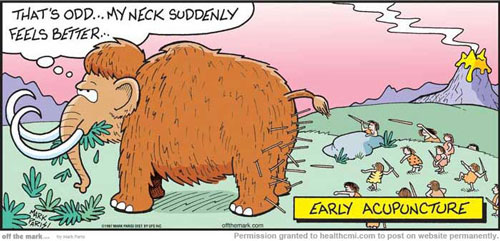
22 MAY 2013.
Artitcle compliments of HealthCMI
Researchers have discovered how to measure and validate the existence of acupuncture points and their meridians. MRI studies and oxygen sensor studies come from some of the most prestigious universities in the world. Today, I want to start with remarkable research from investigators at one of the most prestigious universities in Korea.
Sungkyunkwan University (Seoul) was founded in 1398. Yes, over 600 years ago! It was recently acquired by the Samsung Group in 1996, which has helped preserve its legacy of excellence with substantial financial support. The university is a leader in many fields including nanotechnology and natural sciences, features a dual degree program with Ohio State University and has a collaborative program with the MIT (Massachusetts Institute of Technology) Sloan School of Management.
Two researchers from Sungkunkwan Univeristy worked with another researcher from the Department of Chemistry and Nano Science at Ewha Womans University on this ground breaking research. Notably, Ewha Womans University is considered one of the most prestigious schools in Korea and produced Korea’s first female doctor, lawyer, justice on the Constitutional Court and the first female prime minister of Korea.
Why all the fuss about researchers and the schools they hail from? In the many years I have worked in Chinese and Oriental Medicine, I have uniformly come across skepticism and resistance to valuable, peer reviewed research. I want to give a little background before going forward with something as important as this research. For some it seems, no research institute or study is sufficient so long as it says something positive about acupuncture and herbal medicine. Ethnocentrism abound, I wanted to stave off imperious pans decrying putative proofs and to assuage presumptive skepticism and concomitant guetapens. Perhaps establishing the authenticity and seriousness of the institutions from which the research emanates helps equanimity to mollify incredulity and for rapprochement to exist between the skeptic and modern scientists whose works demonstrate the existence of acupuncture points and their functions.
The research from Sungkyunkwan University and Ewha Woman University is entitled Heterogeneity of Skin Surface Oxygen Level of Wrist in Relation to Acupuncture Point.[1] The study used an amperometric oxygen microsensor to detect partial oxygen pressure variations at different locations on the anterior aspect of the left wrist. The researchers concluded that partial oxygen pressure is significantly higher at acupuncture points.
Below are two images from the study measuring the increase of partial oxygen pressure combined with an overlay of the local acupuncture point locations. The images are representative of typical readings found in the study and remarkably map the Lung Hand Taiyin, Pericardium Hand Jueyin and Heart Shaoyin channels and their associated local points. Depicted are P7 and P6 clearly showing high oxygen pressure levels. The same is true for LU9, LU8, HT7, HT6, HT5 and HT4. Note that non-acupuncture point regions do not show higher oxygen pressure levels. These measurements are not needled points but are natural resting states of acupuncture points absent stimulation. This biomedical research gives us insight into the structural makeup of acupuncture points. This type of basic research is not isolated and numerous studies from multitudes of the top research centers and universities demonstrate specific properties and physiological actions of acupuncture points.
– See more at: http://www.healthcmi.com/Acupuncture-Blog/758-acupointgb40#sthash.RUU7LZZz.dpuf
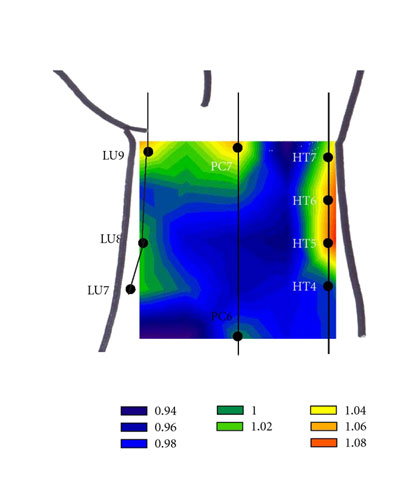
The nexus of most research on the physical existence of acupuncture points and acupuncture meridians is hemodynamic, MRI, oxygen pressure, histological, physiological, clinical and electroconductivity research. Researchers at the University of California School of Medicine (Irvine, California) noted, “Recent evidence shows that stimulation of different points on the body causes distinct responses in hemodynamic, fMRI and central neural electrophysiological responses.” The investigators reviewed MRI results and noted that “stimulation of different sets of acupoints leads to disease-specific neuronal responses, even when acupoints are located within the same spinal segment.” This summarizes research in the vanguard of technical documentation on acupuncture.[2][3]
University of California researchers Choi, Jiang and Longhurst note of acupuncture, “hemodynamic, functional magnetic resonance imaging and neurophysiological studies evaluating the responses to stimulation of multiple points on the body surface have shown that point-specific actions are present.”[4] Naturally, they are running into the difficulty of AhShi points and their specific actions. Perhaps they will discover new effective actions for AhShi points as a result of basic research. Other research shows point specificity in brain physiology and reflects the overall direction of scientific investigation in the field of acupuncture.
The Journal of Magnetic Resonance Imaging featured research on the neurophysiological effects of acupuncture points using MRI imaging noting that acupoint GB40 stimulation enhanced “connectivity between the superior temporal gyrus (STG) and anterior insula.” The investigators concluded, “The current study demonstrates that acupuncture at different acupoints could exert different modulatory effects on RSNs. Our findings may help to understand the neurophysiological mechanisms underlying acupuncture specificity.”[5] Here, the researchers have validated acupuncture point specificity and suggest a possible physiological model of understanding acupuncture points.
HRV (Heart Rate Variability) is a measure of cardiovascular health. One study notes that, “HRV changes significantly during auricular acupuncture….” This research also notes that, “HRV total increases during auricular acupuncture….”[6] Another related study from the International Society for Autonomic Neuroscience notes that acupuncture “causes the modulation of cardiac autonomic function.” These are but two examples of investigations citing specific medicinal actions of specific acupuncture points and is in no way exhaustive of the vast body of research demonstrating acupuncture point specificity for the treatment of hypertension, atrial fibrillation and other cardiovascular disorders.[7] Investigators from the University of California (Los Angeles and Irvine) “have shown that electroacupuncture stimulation activates neurons” in specific brain regions thereby reducing hypertension.[8]
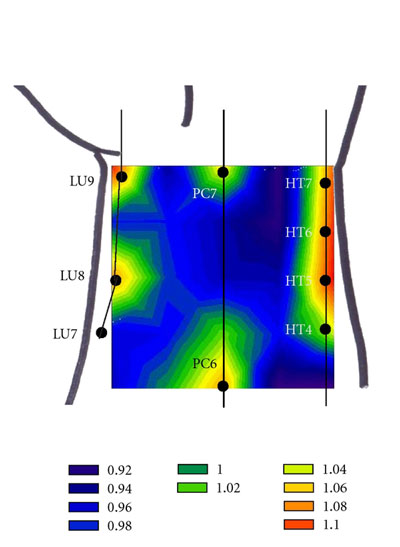
Dr. Berman, M.D. served as a lead researcher in a University of Maryland School of Medicine investigation published in the prestigious Annals of Internal Medicine. The research concludes that, “Acupuncture seems to provide improvement in function and pain relief as an adjunctive therapy for osteoarthritis of the knee when compared with credible sham acupuncture and education control groups.”[9] What is interesting in this clinical trial is that it was an early study showing that sham acupuncture was not as effective as verum acupuncture. The study sought to isolate and address the placebo effect and found that it is not responsible for the medical benefits associated with acupuncture therapy. There are many papers showing the specific medical benefits of acupuncture on internal organs, tissues and towards the resolution of specific ailments. I thought I would highlight this investigation given its historical value.
Einstein’s Theory of Relativity initially did not catch on and was ridiculed before acceptance. The same is true for much of medicine both old and new. People’s presuppositions often circumvent equanimity and receptiveness to new insights. Backing up a bit, one might have thought that a basic neurologic test for the Babinski Sign was pure fiction. It may have seemed logical and self-evident that rubbing someone’s foot and looking for dorsiflexion of the great toe and fanning of the other toes could not possibly indicate brain or spinal cord damage. Yet, the great French neurologist of Polish origin, Babinski, discovered that this plantar reflex identifies central nervous system damage, which is now an accepted medical reality by medical doctors and is an effective diagnostic tool for central nervous system damage.
Acupuncturists and herbalists have faced acrimonious traducements and caluminiations towards substantiated supportive research. Often there is a predilection towards rejecting the efficacy of Chinese and Oriental Medicine that trumps the realities of hard evidence and smacks of ethnocentrism. The Flat Earth Society felt the same way about the infidels suggesting that the earth is round. Galileo had his fair share of troubles too. It cannot be underestimated how high the stakes really are for patient care and beneficial patient outcomes. At risk is non-integration of cost-effective medicine that roots out the source of suffering by healing illness. A time honored traditional clinical medicine history combined with supportive modern research data suggests that acupuncture is an effective modality of therapeutic care. Acupuncture seems impossible? Recall the words of Mark Twain, “Fiction is obliged to stick to possibilities. Truth isn’t.”
It may appear to some that it is self-evident and logical that acupuncture points exist only as part of some sort of chimerical hermeneutic system. However, extensive research has already been conducted at major universities worldwide demonstrating not only that acupuncture points and meridians exist but also how they physiologically function. There is a resistance to an enormous body of research. Cloaked in veil of mature skepticism and realism, naysayers grasp at piecemeal attack pieces to fight off what has already been measured, documented and peer reviewed both in individual studies and large scale meta-analyses. I suggest an era of open-mindedness towards the modern research documenting the efficacy of Chinese and Oriental medicine, acupuncture and herbal medicine.
Footnotes:
[1] Minyoung Hong, Sarah S. Park, Yejin Ha, et al., “Heterogeneity of Skin Surface Oxygen Level of Wrist in Relation to Acupuncture Point,” Evidence-Based Complementary and Alternative Medicine, vol. 2012, Article ID 106762, 7 pages, 2012. doi:10.1155/2012/10a6762.
[2] Point specificity in acupuncture. Chin Med. 2012 Feb 28;7:4. doi: 10.1186/1749-8546-7-4. Choi EM, Jiang F, Longhurst JC.
[3] Susan Samueli Center for Integrative Medicine, Department of Medicine, School of Medicine, University of California, Irvine CA 92697-4075, USA.
[4] Point specificity in acupuncture. Chin Med. 2012 Feb 28;7:4. doi: 10.1186/1749-8546-7-4. Choi EM, Jiang F, Longhurst JC.
[5] Zhong, C., Bai, L., Dai, R., Xue, T., Wang, H., Feng, Y., Liu, Z., You, Y., Chen, S. and Tian, J. (2011), Modulatory effects of acupuncture on resting-state networks: A functional MRI study combining independent component analysis and multivariate granger causality analysis. Journal of Magnetic Resonance Imaging.
[6] Evidence-Based Complementary and Alternative Medicine. Volume 2012 (2012), Article ID 817378, 7 pages. doi:10.1155/2012/817378. Sino-European Transcontinental Basic and Clinical High-Tech Acupuncture Studies—Part 1: Auricular Acupuncture Increases Heart Rate Variability in Anesthetized Rats. Xin-Yan Gao, Kun Liu, Bing Zhu and Gerhard Litscher.
[7] Kurono Y, Minagawa M, Ishigami T, Yamada A, Kakamu T, Hayano J. Auton Neurosci. Acupuncture to Danzhong but not to Zhongting increases the cardiac vagal component of heart rate variability. 2011 Apr 26;161(1-2):116-20. Epub 2011 Jan 7.
[8] Evidence-Based Complementary and Alternative Medicine. Volume 2012 (2012), Article ID 878673, 9 pages. doi:10.1155/2012/878673. Neuroendocrine Mechanisms of Acupuncture in the Treatment of Hypertension. Wei Zhou and John C. Longhurst. Department of Anesthesiology, David Geffen School of Medicine, University of California Los Angeles, Los Angeles, CA. Department of Medicine, University of California Irvine, Irvine, CA.
[9] Ann Intern Med, Berman, Lixing, Lagenberg, Lee, Gilpin, Hochberg. 2004; 141:901-910.
– See more at: http://www.healthcmi.com/Acupuncture-Blog/758-acupointgb40#sthash.RUU7LZZz.dpuf
Turmeric: A Chinese Herbal Perspective
Blue Valley Acupuncture Clinic
Located in Dayton, WA.-Serving greater Walla Walla area & nearby towns of Waitsburg, Starbuck & Pomeroy
Turmeric: Pros, Cons, and Contraindications
Written by Lesley Tierra
Turmeric has become increasingly popular over the last decade, first for blood purification and then for joint pain. As it’s hit the mainstream, its uses have narrowed at the same time. While turmeric is a fabulous herb with many beneficial applications, it’s also quite powerful and can strongly imbalance the body if over-used or misused. Most people aren’t aware of this and definitely should be.
First, the good news. While both turmeric tuber and rhizome are considered medicinal, the rhizome specifically is both the spice used in Indian cooking and western herbalism. It has a warm energy with a spicy and bitter taste and enters the Spleen, Stomach and Liver. It invigorates the Blood and Qi and has analgesic, emmenagogue, cholagogue, antibacterial, antifungal and anti-inflammatory properties.
Turmeric rhizome treats amenorrhea, dysmenorrhea, sports injuries, trauma pain and swelling, flank, gastric or abdominal congestion and pain, and eases painful obstruction due to Wind, Cold and Damp with Stagnant Blood, particularly in the shoulders. It’s also used for gallstones, hepatitis, wounds, bruises, toothache, hemorrhage, arthritis and cataracts. Further, the rhizome is anti-inflammatory, antioxidant and purifies the blood and liver. It also strengthens digestion, improves intestinal flora, aids in digestion of protein, and treats gas, colic and jaundice.
With all these great uses, what could be harmful about turmeric? Well, now for the bad news. Turmeric is very bitter and so strongly dries the Blood and Yin. If taken for extended periods or overdosed, it can cause dizziness, blurry vision, insomnia, dry eyes, burning in the hands and feet, steaming bone disorder and night sweats.
I have had many a patient come in with such symptoms, uncertain as to what may have caused them. Because they didn’t have a typical Yin Deficient constitution, we investigated further and found high doses of turmeric supplements often the culprit.
Because it is so highly touted in the western marketplace for pain relief, people tend to take tons of turmeric. It’s not unusual for people to take supplements indiscriminately. If such and so is good for this or that, then people automatically take it and for extended periods of time. As well, they think if some is good or helpful, then more is better. And then they continue to take it preventatively when it may no longer be necessary. While either of these approaches is fine for many supplements, for turmeric it is not.
Turmeric does indeed reduce pain and swelling, but overdosing with it or taking it for prolonged periods does deplete the Blood and Yin. This is even more true for vegetarians, vegans and women during menses and so these folks should be particularly careful with this herb. It takes a long time to nourish Yin again, and the dampening herbs that do so put the digestive system at risk.
When recommending any herbs and supplements, first consider a person’s constitution along with all their signs and symptoms before making your choices. Further, it’s best to not use most herbs for a single commercial use. This may cause subsequent negative impact on other aspects of the body, which in turn, can give a bad reputation to that herb because it now has dangerous “side effects.”
Most herbs are mild in nature and don’t have side effects, just improper use. Narrowing an herb’s use to one famous commercial application not only loses the knowledge of the herb’s other effects and can harm people, but also endangers herbalism for us all. Let’s keep our traditional knowledge of herbs alive and use them within the context of the whole person’s needs and not just support its one commercial use. This not only benefits people, but also supports herbal medicine for us all.
Acupuncture Helps Post-Surgical Healing In Appendicitis
Acupuncture Improves Appendicitis Recovery, New Study
on 01 May 2014.

Researchers conclude that combining acupuncture with conventional biomedical post-operative care improves patient outcomes for cases of appendicitis treated with surgical removal of the appendix. Acupuncture improved surgical recovery rates including a more rapid recovery of intestinal function. AppendectomyAs a result, the research team concluded that acupuncture after an appendectomy is an effective modality for improving patient recoveries.
Researchers from the Shanxi Hospital of Traditional Chinese Medicine (TCM) randomly divided 60 acute suppurative appendicitis cases equally into an acupuncture group and a control group. Suppurative appendicitis is a type of acute appendicitis with purulent exudate that is filled with bacteria and inflammation related fluids. This type of appendicitis is often severe, painful, late-stage and life threatening. The acupuncture group receiving the same care as the control group but with the addition of post-operative acupuncture treatments. The acupuncture group significantly outperformed the control group regarding the recovery of intestinal function.
An appendectomy, surgical removal of the appendix, is often performed as an emergency procedure to prevent sepsis and morbidity. In the absence of access to surgical facilities, intravenous antibiotics are often used to prevent sepsis. Many cases treated with perioperatively with intravenous antibiotics resolve completely. Other cases require surgery. This is often performed laparoscopically, a minimally invasive surgical procedure when compared with an open operation.
The researchers investigated the effects of acupuncture on the recovery state of suppurative appendicitis patients who received laparoscopic appendectomies. Anesthesia combined with surgical trauma for the procedure requires a recovery period. A better and more rapid recovery period contributes to improved patient outcomes. After an appendectomy, the intestines are in a protective numb state due to the impact of the operation and anesthesia, causing the slowing down or even stopping of intestinal movement. Therefore, recovering the intestinal function as quickly as possible is critical in reducing the occurrence of intestinal adhesions and obstructions. Abdominal AcuPoints
The primary acupuncture points used in the study were Zhongwuan (CV12), Tianshu (ST25) and Shangjuxu (ST37). In Traditional Chinese Medicine (TCM) theory, these points have special functions. CV12 is the front Mu point of the stomach, the influential point for all yang organs, regulates stomach qi and transforms rebellious qi. As a result, this point is indicated for the treatment of stomach and intestinal disorders. ST25 is the front Mu point of the Large Intestine, regulates the function of the intestines, regulates qi and eliminates stagnation. It is often used for the treatment of abdominal disorders including obstructions, diarrhea, pain, distention and edema. ST25 is also widely used in the treatment of menstrual disorders. ST37 is the lower He Sea of the large intestine and is a Sea of Blood point. ST37 regulates the intestines and stomach, clears damp-heat and eliminates accumulations. It is widely used in the treatment of abdominal disorders.
After the appendectomy, the control group received routine biochemical medications while the treated group received acupuncture plus routine biochemical medications. Acupuncture was applied on the first day following operation. The primary acupoints were Zusanli (ST36), CV12, ST37 and ST25. Secondary acupoints were chosen according to differential diagnoses of individual patients: Taichong (LV3) for hyperactivity of Liver-yang, Fenglong (ST40) for damp-heat retention in the Spleen and Neiguan (PC6) for nausea and vomiting. Once the deqi sensation was achieved with manual acupuncture, electroacupuncture was applied using a continuous wave at 6-9V for 30 minutes. Acupuncture was applied once daily for three consecutive days.
After the treatment, the researchers used standard measurements to determine intestinal motility and restoration of function. Acupuncture significantly improved the recovery rates of the first flatulence, borborygmus and defecation. Based on these results, the researchers conclude that timely acupuncture after an appendectomy speeds up the recovery of intestinal function and thus the recovery of the patient.
Reference:
Li, Pengfei, Junhua Ren, and Yonghong Dong. “Clinical observation of acupuncture on recovery of intestinal function after acute suppurative appendicitis.” Clinical Journal of Chinese Medicine 4 (2014): 59-60.
– See more at: http://www.healthcmi.com/Acupuncture-Continuing-Education-News/1302-acupuncture-improves-appendicitis-recovery-new-study#sthash.4NA68IoD.dpuf
Links to Research
Article attributed to HealthCMI-Continueing Education for Nurses & Acupuncturists
BLUE VALLEY ACUPUNCTURE CLINIC SERVES THE GREATER WALLA WALLA AREA, DAYTON, WAITSBURG AND NEARBY TOWNS.
5 Key Acupuncture Discoveries
Five new acupuncture discoveries received widespread global attention.
1. on the list was that of CT scans capturing acupuncture points. CT (computerized tomography) X-ray scans now reveal the anatomical structure of acupuncture points. This rocked the research world after being published in the Journal of the Electron Spectroscopy and Related Phenomena. HealthCMi Prior to these findings, researchers were able to map electrical, heat and oxygen density patterns for acupuncture points. This most recent discovery finding, however, included the very first CT images of acupuncture point structures. To learn more, take a look at the Healthcare Medicine Institute’s acupuncture continuing education article.
2. Acupuncture has important implications for patients suffering from depression. Electroacupuncture is shown to increase brain cell health associated with mental health. An examination of brain cells following acupuncture treatments uncovered important mechanisms by which acupuncture exerts its antidepressant effects.
The researchers discovered that acupuncture exhibits regulatory effects on special brain cells in the hippocampus called neural progenitor cells (NPs). These cells contribute to the maintenance of the brain and spinal cord. A major function of NPs is in the replacement of damaged or dead cells. Injured cells activate NPs to differentiate into the target tissue.
The research team cited numerous studies demonstrating “that acupuncture is an effective remedy for depression and it may be as effective as antidepressant drugs.” They also note that electro-acupuncture increases neurogenesis in the hippocampus as do SSRIs (serotonin reuptake inhibitors), a class of antidepressant medications. Neurogenesis is the process by which neurons are generated from neural stem and progenitor cells. To learn more, a full write-up is available online at HealthCMi.
3. Studies confirm prior findings that acupuncture significantly reduces hypertension. Researchers conclude that acupuncture has a “stable antihypertensive effect.” Acupuncture point KI3, located in the ankle region, was shown to have an “antihypertensive effect for essential hypertension.” Over 1.5 billion people have high blood pressure and it is the leading cause of death amoung cardiovascular disorders. In the USA, high blood pressure is the most common chronic medical disorder associated with doctor office visits. The American Heart Association estimated that the cost of this disorder exceeded $76 billion dollars in 2010. To find out more, visit the HealthCMi page on this topic. Back Acupoints
4. Research produced overwhelming scientific evidence that acupuncture reduces pain. The discovery created a great stir because it was published in the prestigious Journal of the American Medical Association (JAMA). Researchers from Memorial Sloan-Kettering Cancer Center, New York and Technical University, Munich conclusively proved that acupuncture reduces pain. The sham-placebo controls examined in the meta-analysis met the highest standards and put to rest the age old question, does it work? The comprehensive investigation reviewed 31 studies involving 19,827 patients. After 2,000 years of clinical success it is now official, acupuncture stops pain. Learn more in the full news article.
5. New research demonstrating that acupuncture significantly improves pregnancy rates and has potent effects in reversing infertility. The study measured acupuncture’s success in patients using IUI, IVF and for those using no biomedical interventions. All three groups showed significant improvements in pregnancy rates. Lear more in the article on acupuncture for fertility.
Another recent investigation demonstrated that acupuncture is safe and effective for relieving pain and nausea in the emergency room setting. The study concluded that acupuncture combined with biomedical care improves patient outcomes. This type of study reflects a myriad of new research demonstrating the role of acupuncture in an integrative medical environment. Read about this finding in the aricle on acupuncutre emergency room care.
Another investigation receiving widespread attention is that acupuncture combined with ginger moxibustion has a curative effect on patients with intractable tinnitus, ear ringing. Researchers from a hospital in Hubei province treated cases of intractable tinnitus using acupuncture and ginger moxibustion. They achieved an overall effective rate of 91.18%. The study outlined a special protocol for the treatment of this pernicious and often difficult to treat disorder. Lean more in the article on acupuncture for tinnitus.
Another recent study finds that acupuncture benefits the ovaries by regulating sex hormones for cases of PCOS, polycystic ovarian syndrome. According to the research, acupuncture facilitated “the normal transformation of ovarian androgen to estrogen” and restored normal endocrine system functions. This type of laboratory research, now common, measures the direct impact on bodily biochemicals by acupuncture. This helps to explain the long-lasting therapeutic effects caused by acupuncture care. Learn more in the article Acupuncture Regulates Sex Hormones in PCOS.
References:
Yang, Liu, Na Yue, Xiaocang Zhua, Qiuqin Hana, Bin Lia, Qiong Liu, Gencheng Wu, and Jin Yu. “Electroacupuncture promotes proliferation of amplifying neural progenitors and preserves quiescent neural progenitors from apoptosis to alleviate depressive-like and anxiety-like behaviours.”
Chenglin, Liu, Wang Xiaohu, Xu Hua, Liu Fang, Dang Ruishan, Zhang Dongming, Zhang Xinyi, Xie Honglan, and Xiao Tiqiao. “X-ray phase-contrast CT imaging of the acupoints based on synchrotron radiation.” Journal of Electron Spectroscopy and Related Phenomena (2013).
Antihypertensive Effect of Acupuncturing at KI3 in Spontaneously Hypertensive Rats, Shaoyang CUI, Mingzhu Xu, Shuhui Wang, Chunzhi Tang, Xinsheng Lai, Zhiqi Fan; Shenzhen Futian Hospital of TCM, Guangzhou University of Chinese Medicine; 2013 IEEE International Conference on Bioinformatics and Biomedicine.
Vickers AJ, Linde K. Acupuncture for Chronic Pain. JAMA. 2014;311(9):955-956. doi:10.1001/jama.2013.285478.
Chui, Shiu Hon, Fung Chun Chow, Yim Tong Szeto, Kelvin Chan, and ChristopherWK Lam. “A Case Series on Acupuncture Treatment for Female Infertility with some cases supplemented with Chinese Medicines.” European Journal of Integrative Medicine (2014).
Zhang, Anthony L., Shefton J. Parker, David McD Taylor, and Charlie CL Xue. “Acupuncture and standard
emergency department care for pain and/or nausea and its impact on emergency care delivery: a feasibility study.” Acupuncture in Medicine (2014): acupmed-2013.
Li, Shilin, Yan Xiao, Yingli Song, and Jiang Wu. “Efficacy Observation of Acupuncture Combined with Ginger Moxibustion to Treatment of 34 Cases of Intractable Tinnitus.” Zhongyi Zhongyao (Traditional Chinese Medicine and Herbs) Aug. 2013: 277-278.
– See more at web link posted below-
http://www.healthcmi.com/Acupuncture-Continuing-Education-News/1303-five-key-acupuncture-discoveries#sthash.3WRmnVWi.dpuf
Acupuncture: Adjunct Therapy for Cancer Treatments in the Walla Walla and Dayton Wa. area.
Article from The Integrative Medicine Service At Memorial Sloan-Kettering Cancer Center
Recent studies have shown that acupuncture can help control a number of symptoms and side effects  — such as pain, fatigue, dry mouth, nausea, and vomiting — associated with a variety of cancers and their treatments. Experts from Memorial Sloan-Kettering Cancer Center’s Integrative Medicine Service, who have either conducted or reviewed many of those studies, recommend that cancer patients interested in acupuncture seek a certified or licensed acupuncturist who has training or past experience working with individuals with cancer.
— such as pain, fatigue, dry mouth, nausea, and vomiting — associated with a variety of cancers and their treatments. Experts from Memorial Sloan-Kettering Cancer Center’s Integrative Medicine Service, who have either conducted or reviewed many of those studies, recommend that cancer patients interested in acupuncture seek a certified or licensed acupuncturist who has training or past experience working with individuals with cancer.
Acupuncture
Acupuncture treatment, a two-thousand-year-old component of traditional Chinese medicine, involves stimulating one or more predetermined points on the body, called acupoints, with needles for therapeutic effect. Heat, pressure, or electricity may be added to intensify the effect of the acupuncture needles. According to traditional Chinese medicine beliefs, energy flows throughout the body along channels, or “meridians.” Specific acupoints are stimulated to increase energy flow along various channels throughout the body to a particular tissue, organ, or organ system.
Treatment is usually customized to treat each patient’s particular symptoms. A typical acupuncture session, which takes about 30 minutes, involves the insertion of ten to 20 very thin, stainless steel needles. Most patients receiving acupuncture experience no pain from the insertion of the needles, and there is minimal risk of injury from acupuncture treatments, with reports of fewer than one adverse event in more than 10,000 treatments.
According to the Centers for Disease Control and Prevention, each year more than eight million Americans use acupuncture to treat different ailments. Studies have demonstrated its effectiveness in the treatment of a host of non-cancer-related health issues, such as back pain, chronic headaches, osteoarthritis, high blood pressure, infertility, and hot flashes. Its use for the treatment of symptoms and side effects of a variety of cancers has recently been investigated in a number of studies and reviews.
Acupuncture for Head and Neck Cancer
For many of the more than 100,000 individuals diagnosed with head and neck cancer each year in the United States, the cancer spreads from its primary location to lymph nodes in the neck. When this occurs, nerves known as spinal accessory nerves must also be removed along with the affected lymph node, which can lead to shoulder function problems.
A recent study [PubMed Abstract] conducted by Memorial Sloan-Kettering investigators and published in the April 2010 issue of the Journal of Clinical Oncology sought to determine if acupuncture could reduce pain and dysfunction in individuals with cancer of the head or neck who had received a surgical dissection of lymph nodes in their neck. The study evaluated 58 patients who were suffering from chronic pain or dysfunction as a result of neck dissection. For four weeks, study participants were randomly assigned into one of two groups: those receiving weekly acupuncture sessions and those receiving standard care, which included physical therapy, as well as pain and antiinflammatory medication.
The study found that individuals in the group receiving acupuncture experienced significant reductions in pain and dysfunction when compared with individuals receiving standard care. Individuals in the acupuncture group also reported significant improvement in xerostomia, a condition in which patients receiving adjuvant radiation therapy experience extreme dry mouth.
Acupuncture and Leukemia
Many people with leukemia try additional treatments outside their standard care, hoping to manage symptoms and, in some cases, to improve their treatment outcome. In a commentary [PubMed Abstract] on the subject in the September 2009 issue of Expert Reviews Anticancer Therapies, Memorial Sloan-Kettering investigators examined the results from available studies testing the effectiveness of such approaches. They report that among the complementary therapies used to decrease symptoms and side effects, acupuncture is very beneficial for symptom management.
For some leukemia patients, cancer chemotherapy drugs can damage the peripheral nervous system (a condition known as peripheral neuropathy), causing pain, numbness, tingling, swelling, and muscle weakness in various parts of the body, especially in the hands and feet. In some cases, doctors must reduce the chemotherapy dose in order to prevent the neuropathy from progressing further. Acupuncture has been found to decrease these difficult neuropathy symptoms, allowing the maximum amount of chemotherapy to be used, thereby increasing the patient’s chance for a successful outcome.
Acupuncture is also known to reduce the effects of nausea caused by a variety of chemotherapy agents used to treat leukemia. Research has shown that timing the acupuncture sessions one to two days before chemotherapy infusion and continued weekly throughout the chemotherapy regimen produces the best results. In addition, the authors note that acupuncture has been proven safe for patients receiving the anticoagulation drugs Coumadin® or heparin during their leukemia treatment.
The review’s authors note that, in general, it is important to distinguish between complementary therapies — including acupuncture, self-hypnosis, yoga, meditation, and therapeutic massage — and alternative therapies, which are unproven and ineffective, and may interfere with mainstream cancer treatments.
Acupuncture and Breast Cancer
A significant number of breast cancers have receptors for the hormone estrogen. These receptor-positive breast tumors are more likely to respond to therapy with anti-estrogen medications, which take advantage of the cancer cells’ dependence on hormones for growth. Women with these tumors are often given treatment that blocks the production of estrogen, which is meant to slow the growth of the tumor. These treatments can induce early menopause, leading to symptoms such as hot flashes, fatigue, and excessive sweating. Because these women cannot receive hormone replacement therapy, which is usually used to treat such symptoms, doctors typically prescribe antidepressants such as the drug venlafaxine (Effexor).
A recent study examined whether acupuncture reduces some of these common side effects and produces fewer adverse effects than antidepressants. In the study [PubMed Abstract], published in the February 2010 issue of the Journal of Clinical Oncology, 50 women with hormone-receptor positive breast cancer were assigned into one of two groups. The first group received 12 weeks of acupuncture, and the second group received treatment with venlafaxine.
Both groups experienced significant decreases in hot flashes, depressive symptoms, and other quality-of-life symptoms. However, women in the group taking venlafaxine began to re-experience their symptoms about two weeks after stopping drug therapy. In comparison, it took 15 weeks for the symptoms to return for women in the group receiving acupuncture. In addition, women in the acupuncture group reported no significant side effects during treatment, while the group taking venlafaxine experienced 18 incidences of adverse effects, including nausea, dry mouth, dizziness, and anxiety.
Finding the Right Acupuncturist for Cancer Patients
The National Certification Commission for Acupuncture and Oriental Medicine (NCCAOM) provides a list of practitioners who are nationally certified in Oriental medicine, acupuncture, Chinese herbology, and Asian bodywork therapy. The Integrative Medicine Service at Memorial Sloan-Kettering Cancer Center has trained thousands of acupuncturists from across the United States and many other countries. Its previously face-to-face, three-day courses were replaced in April 2010 with Internet-based courses to facilitate international requests. The Integrative Medicine Service also maintains a list of cancer-trained acupuncturists. Our integrative medicine specialists stress the importance of using an acupuncturist who is NCCAOM certified or licensed and who has training in working with cancer patients.
Blue Valley Acupuncture Clinic is located in Dayton, Washington near Walla Walla, WA. and serves folks in Walla Walla, Dayton, Waitsburg, Pomeroy and surrounding towns.
Denise Lane is Nationally Board Certified and listed with NCCAOM.
Harvard Study Concludes: Acupuncture Proven to Have an Effect beyond Placebo
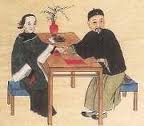 Blue Valley Acupuncture Clinic serves the greater Walla Walla area, Dayton, Washington and surrounding towns of Waitsburg, Pomeroy and Starbuck.
Blue Valley Acupuncture Clinic serves the greater Walla Walla area, Dayton, Washington and surrounding towns of Waitsburg, Pomeroy and Starbuck.
Acupuncture Proven to have an Effect beyond Placebo, Harvard Study Concludes
Thursday, December 11, 2008 by: Dave Gabriele
Is acupuncture nothing more than a dressed-up placebo effect? Not according to arecent joint MIT-Harvard Medical School clinical study. The study, published in the November 2008 issue of the peer-reviewed science journal Behavioural Brain Research, utilized functional magnetic resonance imaging (fMRI) and positron emission tomography (PET) to examine the effects of acupuncture in relieving pain.
The effect of manual acupuncture in 12 healthy “acupuncture-naive” subjects (6 male, 6 female) was observed by monitoring fMRI of the brain and [11C]diprenorphine PET. [11C]Diprenorphine is used with PET to measure endogenous opioid release. Endogenous opioids have a morphine-like action in the body. Currently, “…there is strong evidence that acupuncture analgesia is mediated at least in part by opioid systems” (Dougherty, et. al. p.1).
The Study
The randomized study separated subjects into a real acupuncture group and a placebo acupuncture group. The placebo treatment used a validated sham acupuncture needle (Streitberger placebo) so that the sensation was as close to real acupuncture as possible. Using a placebo is generally believed to eliminate any psychological effects, such as expectation or belief, which may corrupt a study.
During the course of four sessions, the researchers induced pain in the subjects by using heat in varying degrees of intensity. The heat pain, which was issued to the right forearm of each subject, was administered before and after a 29-min treatment of either real or placebo acupuncture at acupoint Large Intestine 4 (LI-4).
The fMRI was used to indentify changes in neural activity by measuring blood flow in the brain. The [11C]diprenorphine PET scans looked for binding decreases which is associated with greater opioid release.
The Results
By comparing the two treatments, the study concluded that “… the reduction in pre- and post-treatment pain ratings was significantly greater in the acupuncture group when compared to the placebo group” (Dougherty, et. al. p.3).
“We found more brain changes during true acupuncture than during placebo acupuncture,” commented Darin D. Dougherty, MD, Associate Professor of Psychiatry at Harvard Medical School and Director of Neurotherapeutics at Massachusetts General Hospital. “fMRI showed changes in the orbitofrontal cortex, insula, and pons during true acupuncture when compared to placebo acupuncture.” The PET scans detected [11C]diprenorphine binding changes during real acupuncture that were very different than the binding changes that occurred during placebo treatment.
The right orbitofrontal cortex (OFC) was the only brain region that showed a common change in both types of scans. During real acupuncture, the right OFC demonstrated increased activity (as determined by fMRI) and increased opioid release (as determined by PET). There were no common fMRI and PET changes during placebo acupuncture
The data suggests that real acupuncture affects the brain differently than placebo acupuncture and is more effective than a placebo in reducing the experience of pain. When asked whether acupuncture is more than a placebo effect, Dr. Dougherty responded, “Yes, the study does show more changes in the brain during active acupuncture than during placebo acupuncture. Therefore, acupuncture certainly entails more than placebo effect.”
NCCAM
This study was funded by The National Center for Complementary and Alternative Medicine (NCCAM). The NCCAM is the American Government`s lead agency for scientific research on complementary and alternative medicine (CAM). It is one of 27 institutes and centers that make up the National Institutes of Health (NIH) within the U.S. Department of Health and Human Services.
SOURCES
1) http://www.sciencedirect.com/science?_ob=ArticleURL&_udi=B6SYP-4SDPX4…
2) http://ecam.oxfordjournals.org/cgi/content/abstract/2/3/315
3) http://www.sciencedirect.com/science?_ob=ArticleURL&_udi=B6WNP-4FKYDT…
4) http://www.anesthesia-analgesia.org/cgi/reprint/104/2/308.pdf
5) http://www.sciencedirect.com/science?_ob=ArticleURL&_udi=B6T0K-4MY117…
